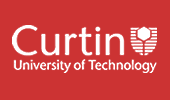| Area: |
Department of Applied Physics |
| Credits: |
25.0 |
| Contact Hours: |
4.0 |
| |
| ** The tuition pattern below provides details of the types of classes and their duration. This is to be used as a guide only. For more precise information please check your unit outline. ** |
| |
| Lecture: |
2 x 1 Hours Weekly |
| Laboratory: |
1 x 2 Hours Weekly |
| |
| Syllabus: |
Design for students who have passed TEE Applicable Mathematics and TEE Calculus. Purpose of computing in Physics. The need for numerical methods. Nature of the laboratory. Hardware terminology. Review of computer architecture. Round-off and truncation. Meaning of variables. Review of numerical integration and root finding. Programming principles. Documentation. Print and Read statements. Assignments statements. Expressions. Intrinsic functions, Statement functions. Further numerical integration. Control structures. Arrays. FOR loops. Review of elementary statistics (random variables, distributions, mean, variance). Data and parameter statements. Formatted I/O Elementary file operations. Monte-Carlo simulations. Sub-programs. Least Squares. Function libraries. File operations. Sorting. Vector and matrix operations. Character handling. Graphing. Smoothing. Differencing. Trend removal. Logical, Complex, Double Precision. Gauss Elimination. Least Squares revisited. LU decomposition. Introduction to FORTRAN. |
| |
| ** To ensure that the most up-to-date information about unit references, texts and outcomes appears, they will be provided in your unit outline prior to commencement. ** |
| |
| Field of Education: | 010301 Physics |
| Funding Cluster: | 08 - Engineering, Science, Surveying |
| SOLT (Online) Definitions*: | Not Online
*Extent to which this unit or thesis utilises online information |
| Result Type: | Grade/Mark |
Availability |
| Availability Information has not been provided by the respective School or Area. Prospective students should contact the School or Area listed above for further information. |


